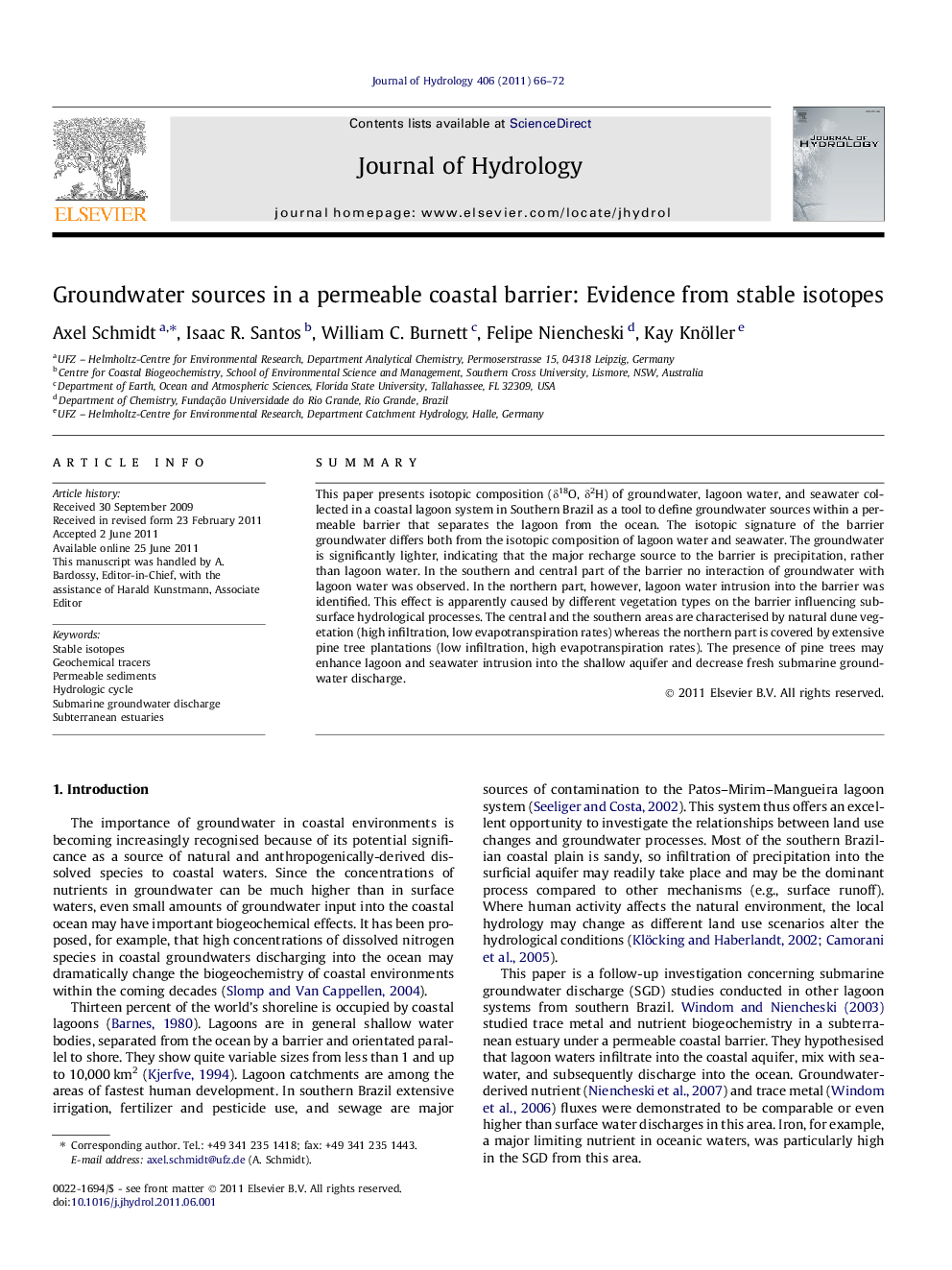| Article ID | Journal | Published Year | Pages | File Type |
|---|---|---|---|---|
| 4577684 | Journal of Hydrology | 2011 | 7 Pages |
SummaryThis paper presents isotopic composition (δ18O, δ2H) of groundwater, lagoon water, and seawater collected in a coastal lagoon system in Southern Brazil as a tool to define groundwater sources within a permeable barrier that separates the lagoon from the ocean. The isotopic signature of the barrier groundwater differs both from the isotopic composition of lagoon water and seawater. The groundwater is significantly lighter, indicating that the major recharge source to the barrier is precipitation, rather than lagoon water. In the southern and central part of the barrier no interaction of groundwater with lagoon water was observed. In the northern part, however, lagoon water intrusion into the barrier was identified. This effect is apparently caused by different vegetation types on the barrier influencing subsurface hydrological processes. The central and the southern areas are characterised by natural dune vegetation (high infiltration, low evapotranspiration rates) whereas the northern part is covered by extensive pine tree plantations (low infiltration, high evapotranspiration rates). The presence of pine trees may enhance lagoon and seawater intrusion into the shallow aquifer and decrease fresh submarine groundwater discharge.
► Application of δ2H/δ18O for the description of the hydrological situation in a coastal barrier system. ► Barrier groundwater is mainly recharged by precipitation. ► Hydrological scenario is influenced by different barrier vegetation types.
